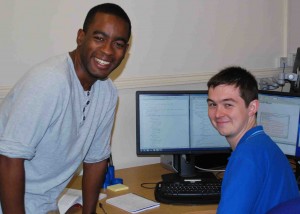Canadian-based PCB manufacturer Candor Industries Inc. is well known in the industry for its ability to produce prototype standard circuit boards very quickly—often within 24 hours. More complex prototypes can be completed in three days and be in full production within 10.
MES a Winning Solution for Gaming Developer
Luck is the key to winning on slot machines, but not to being a successful manufacturer in the gaming markets industry. To achieve that, a company needs to have foresight and be innovative.
Knowles ships multi-mode MEMS microphone
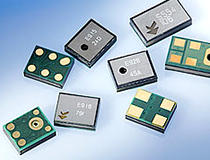 Knowles is shipping a digital MEMS microphone claimed to have the lowest power consumption on the market.
Knowles is shipping a digital MEMS microphone claimed to have the lowest power consumption on the market.
Aimed at consumer electronics, the multi-mode MEMS microphone offers a high Signal-to-Noise Ratio (SNR) within the low power mode, which enables voice controlled applications and maximises battery life.
The new microphone uses Knowles’ low power, “Always On, Always Listening” technology to provide a high SNR component with the lowest power draw in the world – lower than the conventional analog microphone and analog-to-digital converter combination.
Compared to other solutions, Knowles says that this digital multi-mode microphone adds value to consumer electronics by delivering up to 3x less power consumption than other digital microphones and is 20% smaller in size.
For consumers, this new product supports a longer battery life and enables accurate voice recognition in various settings, such as social gatherings and sporting events.
“Before this product, design engineers were forced to choose between microphones with a high SNR and microphones with a low current draw. Our “Always On, Always Listening” technology allows engineers to have both capabilities in one product,” says Knowles’ Thibault Kassir, Senior Director, Product Management, Mobile Consumer Electronics.
Product Details
· Product: High SNR digital bottom port microphone
· Part Number: SPH0641LM4H-1
· Measurements: 3.50 x 2.65 x 0.98 mm
Product Features
· Multiple performance modes (sleep, low-power, standard mode)
· Lowest power consumption in the market (3x less than other digital microphones)
· High Signal-to-Noise Ratio in low power mode
· Best acoustic performance per square millimeter
· Superwide-band capable
· Sensitivity matching for better algorithm performance
· Best in class RF immunity performance
Technical Data
· Signal-to-Noise Ratio: Nominal 64.3 dB(A)
· Flat Frequency Response: Up to 20 kHz
· Power consumption: 235µA in low power mode
· Size: More than 20% smaller than other digital microphones
· Sensitivity matching: ±1 dB
· Digital output: Serial PDM bit stream
Biocatch behavioural biometrics promises password obsolescence
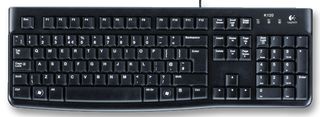 Software can identify people based solely on the way they use their mouse and keyboard, and it could let us do away with passwords altogether, writes Paul Marks of New Scientist.
Software can identify people based solely on the way they use their mouse and keyboard, and it could let us do away with passwords altogether, writes Paul Marks of New Scientist.
As we sit hunched over our keyboards, it is hard to believe that the way we peck at the keys and swish the cursor around is unique. But several companies believe this could be used to prove our identity, doing away with one of the most annoying aspects of digital life: passwords.
From e-commerce sites to social media profiles, passwords protect all kinds of sensitive information. But recent security breaches show just how vulnerable the system is. Earlier this year, the Heartbleed bug sent people scurrying to change passwords across a huge swathe of the internet. And in May, eBay announced that over 200 million accounts may have been compromised in a security breach.
This has boosted interest in behavioural biometrics, says Uri Rivner of Biocatch, a firm based in Tel Aviv, Israel. Behavioural biometrics is based on the idea that individuals subconsciously use their mouse and keyboard in predictable ways – and that these behaviours can reliably identify them. Examples of these actions include how quickly a user selects buttons that pop up on screen, how long they hover over menus, how fast they move the mouse and whether they scroll using the cursor keys, the scroll bar or the mouse wheel. Not all of these need to be used, though.
“We don’t need to find behaviours unique to each person on the planet,” says Neil Costigan, CEO of Behaviosec in Luleå, Sweden. “We just need enough of a spread of behaviours to verify that someone is who they say they are. We look at the behaviour to see if it matches that person’s previous behaviour.”
Plenty of companies are already beginning to implement this technology. Biocatch ran successful trials on the networks of two different banks, which it announced on 17 June had helped it to raise $10 million in venture capital funding. In the US, IBM is starting to deploy the technique in online security software it sells to banks. And Behaviosec has been funded by the Pentagon’s research arm, DARPA, to adapt its desktop behavioural biometrics systems to tablets and smartphones.
IBM’s system monitors behaviour only after a person has logged in using their password. This can prevent a fraudster making transactions, pretending to be an authenticated user who has, for example, gone to make coffee without logging out. When behaviours are detected that are out of character, the software will ask them to log in again with some extra security questions.
Biocatch aims to replace passwords entirely, although at the moment its software is also only used after logging in. The system is more active than IBM’s, presenting people with what it calls subconscious “challenges” that garner distinctive responses. For instance, the software makes the cursor disappear for a few seconds and the type of mouse motion people use to recover it – clockwise, anticlockwise, large arc, small arc – is recorded.
Rivner says that by building a model of how individuals respond to these challenges, and then monitoring actions while banking or shopping online, the software can tell within a few keystrokes if the user is the same person who originally logged in. He says this is well on the way to ridding us of the hassle of passwords, PINs, captchas and other login methods.
Similar advances are on the way with mobile technology. Touch behaviours like finger pressure, swipe speed, angles of swipe, gyroscope and accelerometer readings can all be harnessed to authenticate a user, says Costigan. “The smartphone has an amazing array of inputs for behaviour recognition.”
Syndicated content: Paul Marks, New Scientist
Automotive Tech Consortium Debuts New OS
DETROIT—The Open Automotive Alliance, a consortium of automotive OEMs and technology providers like Google, has launched a new, automotive-specific operating system—Android Auto.
UK-based Asic firm takes on new graduates
Swindon Silicon Systems, the mixed-signal Asic design firm, has expanded its design team by recruiting three graduates.
“We have had a very successful year,” said company managing director, Geoff Hall,” and we have been lucky in recruiting some talented new graduates to continue our growth.”
Jason Robinson is joining Swindon Silicon Systems as a Graduate Product Support Engineer. He is a new graduate in electronic engineering from Southampton Solent University.
The company also has two new Graduate Design Engineers joining in the autumn: William Kelsey, currently completing his MEng in electrical and electronic engineering at Bristol University and Vlad Cretu who has gained an MSc in analogue and digital IC design.
The fabless IC firm is also taking on a group of undergraduates on placement in our product support group.
“This is an opportunity for them to gain valuable on the job training and experience,” said Hall.
Adrian Wheeldon reading Electronic Engineering with Computer Systems at the University of Southampton and Luke Morton reading Electrical and Electronic Engineering at Imperial College have both just completed the second year of their MEng courses and will be with the company for ten weeks over the summer.
There is a European element too with Guillaume Saint-Cirque a 3rd year student at the National Engineering Institute in Mechanics and Microtechnologies in France beginning a five month placement in September.
“The company is committed to supporting the development of young engineers,” said Hall.
Swindon Silicon’s UK-based design team designs chips for the automotive, consumer, defence and medical markets.
Renesas RZ/A1 gets Giuliani support
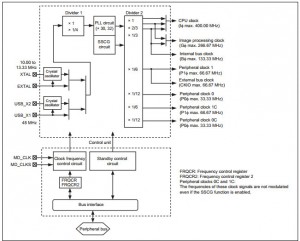 Renesas’ RZ/A1 MPU is to be supported by the Giuliani GUI from TES Electronic Solutions.
Renesas’ RZ/A1 MPU is to be supported by the Giuliani GUI from TES Electronic Solutions.
Renesas’ RZ/A1 microprocessor (MPU) has been designed to give an optimal cost / performance balance for Human Machine Interface (HMI) applications.
The RZ/A1 Group incorporates up to 10MB of embedded SRAM, eliminating the need for external RAM.
Guiliani is a platform independent HMI framework designed for smartphone-like HMIs on embedded systems.
Being OS- and CPU-agnostic and without requiring an expensive hardware GPU, it covers a wide range of cost efficient MCUs and MPUs.
Guiliani is delivered with a customisable and extensible set of modern widgets and features like carousels, wheels, gauges, drop boxes, animations, transition effects, multi-language support and skinning.
Its Applying graphics processing features include sub-pixel accurate rendering, anti-aliasing, scaling, filtering and blending in combination with smart redraw and caching mechanisms.
Guiliani’s PC drag and drop editor and simulator support rapid HMI design and prototyping, resulting in fast development cycles.
Raspberry Pi becomes an industrial web server
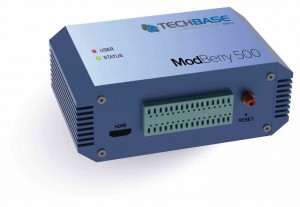 A Polish start-up company is claiming to have created the first industrial computer based on the new Raspberry Pi Compute Module.
A Polish start-up company is claiming to have created the first industrial computer based on the new Raspberry Pi Compute Module.
Techbase, said the device which it has dubbed ModBerry is designed to be used in automation and installation markets providing multi-level user access cloud management.
It designed around the Raspberry Pi Compute Module’s 700 MHz Broadcom processor with 512 MB of RAM and 4GB NAND flash storage.
Its interfaces include RS 485/232 serial ports, CAN and very economical 1-Wire buses, all of which are widely used in automation industry.
There are Ethernet, USB and HDMI ports and wireless communication, such as Wi-Fi, LTE/3G/GPRS cellular modems or Bluetooth technology.
Bartosz Bielawski, marketing manager at Techbase said he believes the Raspberry Pi is here to stay “as a new standard in embedded computing industry”.
The device is also backwards compatible with the original Raspberry Pi board.
It uses Raspberry Pi’s supports free Raspbian operating system, based on Debian GNU/Linux.
The company has also developed its own software specifically for automation and installation markets, which includes iMod, iModCloud and iModWizard.
Apart from the basic installation management like software updates or device grouping and aforementioned access control, iModCloud sports numerous other functions like data visualization capabilities – through data tables or charts, maps, with GPS-enabled devices marked on them, file management and a robust notification, custom-based actions system.
Cambridge team make superconductor ‘golf ball’
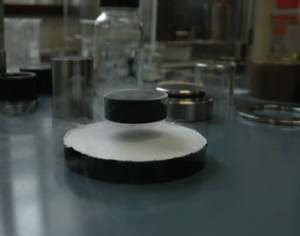 Research led by University of Cambridge engineers claim to have made a breakthrough in superconductor science by harnessing the equivalent of three tonnes of force inside a golf ball-sized sample of material that is normally as brittle as fine china.
Research led by University of Cambridge engineers claim to have made a breakthrough in superconductor science by harnessing the equivalent of three tonnes of force inside a golf ball-sized sample of material that is normally as brittle as fine china.
The research team said what is significant about this discovery is that it demonstrates the potential of high-temperature superconductors for applications in a range of fields, including flywheels for energy storage, ‘magnetic separators’, which can be used in mineral refinement and pollution control, and in high-speed levitating monorail trains.
The research team managed to ‘trap’ a magnetic field with a strength of 17.6 Tesla in a high temperature gadolinium barium copper oxide (GdBCO) superconductor, beating the previous record by 0.4 Tesla.
According to Professor David Cardwell of Cambridge’s Department of Engineering, who led the research, in collaboration with Boeing and the National High Field Magnet Laboratory at the Florida State University: “There are real potential gains to be had with even small increases in field.”
“This work could herald the arrival of superconductors in real-world applications,” said Professor Cardwell. “In order to see bulk superconductors applied for everyday use, we need large grains of superconducting material with the required properties that can be manufactured by relatively standard processes.”
A number of niche applications are currently being developed by the Cambridge team and its collaborators, and it is anticipated that widespread commercial applications for superconductors could be seen within the next five years.
Superconductors can carry currents that are typically 100 times greater than copper, which gives them considerable performance advantages over conventional conductors and permanent magnets.
Superconductors are materials that carry electrical current with little or no resistance when cooled below a certain temperature.
While conventional superconductors need to be cooled close to absolute zero (zero degrees on the Kelvin scale, or –273 °C) before they superconduct, high temperature superconductors do so above the boiling point of liquid nitrogen (–196 °C), which makes them relatively easy to cool and cheaper to operate.
Superconductors are currently used in scientific and medical applications, such as MRI scanners, and in the future could be used to protect the national grid and increase energy efficiency, due to the amount of electrical current they can carry without losing energy.
The new record was achieved using 25 mm diameter samples of GdBCO high temperature superconductor fabricated in the form of a large, single grain using an established melt processing method and reinforced using a relatively simple technique.
The previous record of 17.2 Tesla, set in 2003 by a team led by Professor Masato Murakami from the Shibaura Institute of Technology in Japan, used a highly specialised type of superconductor of a similar, but subtly different, composition and structure.
The research was funded by The Boeing Company and by the UK Engineering and Physical Sciences Research Council (EPSRC). The National High Magnetic Field Laboratory, where the measurements were performed, is funded the National Science Foundation and the State of Florida.
UK bids to create IoT standard
The UK government is funding a consortium of more than 40 UK-based technology companies to help them take commercial advantage of the market for internet-based devices, the so-called internet of things (IoT).
The initiative which is funded by the Technology Strategy Board has at its centre the creation of a new open IoT specification. Called HyperCat, it is designed to support software interoperability, allowing applications to search for data and resources are available on a specific data hub, or across the Internet.
It is the result of 12 months work and with £6.4m funding involving companies such as ARM, BT and IBM with UK start-ups and universities.
“HyperCat has been designed to move us from the ‘internet of silos’ to the internet of things,” said Pilgrim Beart, CEO of IoT start-up 1248.
“Previously, applications were vertically-integrated, working only with specific services, which confines data to narrow vertical silos. HyperCat enables apps to discover data across all services, freeing machines from the human programmer bottleneck and allowing a many-to-many relationship to develop, which is the key to IoT.”
The government hopes this initiative and investment will help give UK companies a leadership position in IoT and in turn support the UK economy by creating new jobs and attracting foreign investment to the UK.
The project has created clusters of IoT start-ups and universities each focussed on a particular application. Each cluster used the HyperCat specification to create interoperability within their cluster and then between clusters.
“This will drive commercial use of the hubs and lowers the barrier to participation, particularly for SMEs,” said John Davies, Head of Semantic Technology at BT.
“While there is still the need for applications and services to agree on standard ways to describe data – so called ontologies – HyperCat offers a common approach to describing the information held on data hubs, thereby allowing people to find data relevant to their specific needs more quickly and easily,” said Davies.

